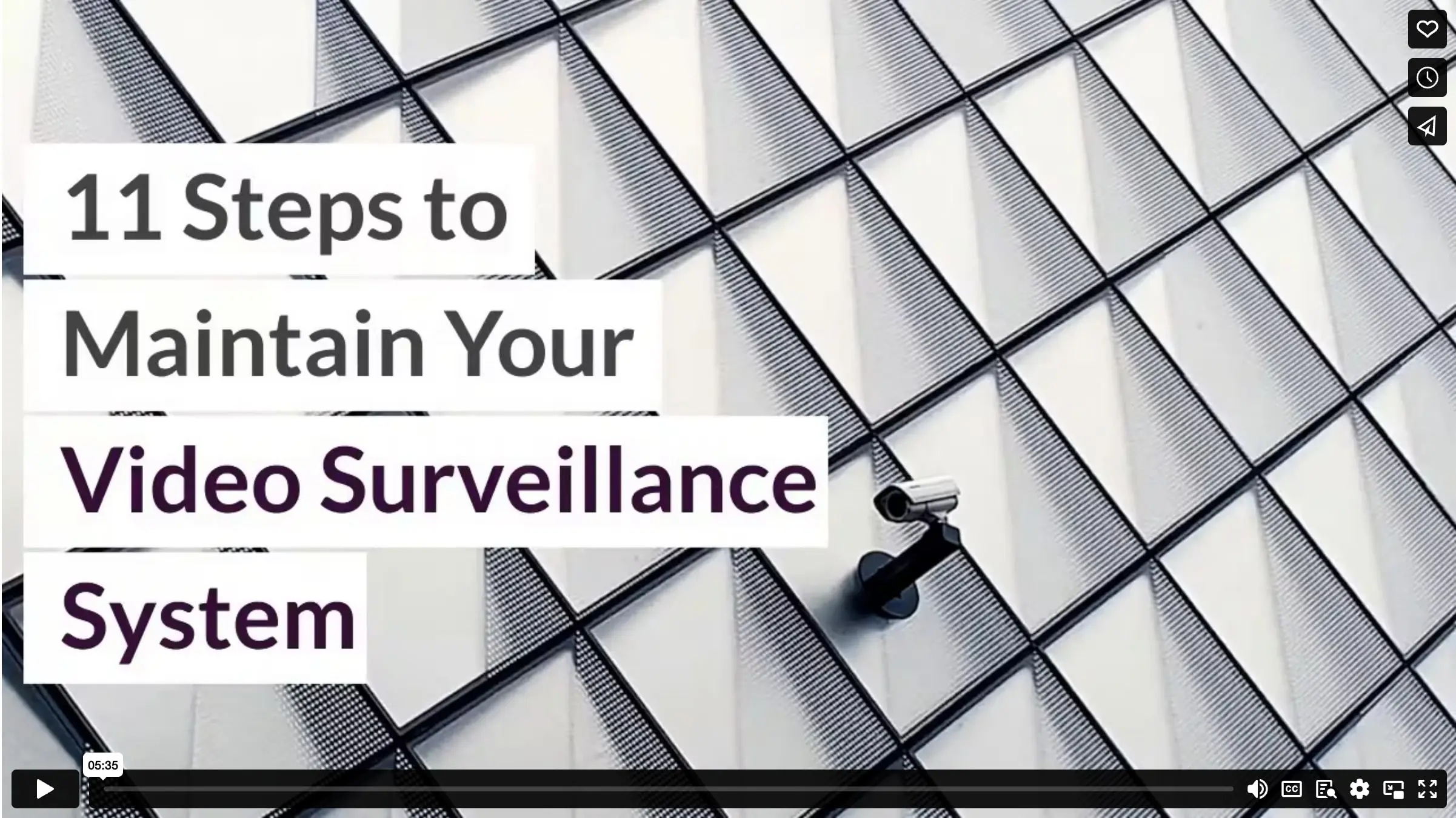In a world where technology is constantly advancing, it’s no surprise that the way we secure and protect our assets has undergone a major transformation. Over the past decade, video surveillance and security systems have taken a leap forward. With the ability to send and receive data directly over the Internet and cutting-edge features like cloud storage, video analytics, and motion sensors, these systems have become the go-to choice for securing people and assets.
Do you have your own video surveillance system? If yes, then you should regularly perform scheduled maintenance to help keep it functioning at its best. Additionally, consider the following tips to improve the overall performance of the system:
1. Clean Lenses
Check your indoor and outdoor security camera lenses. Make sure they are free of dirt, grime, dust, water spots, or other substances that can affect image clarity. A dirty lens will affect the quality of the image, regardless of the camera’s resolution.
For the best results, clean the lenses regularly and thoroughly. Use compressed air to remove loose particles, then gently wipe the lens with a microfiber cloth.
2. Inspect the Power Supply
It’s crucial to verify your camera’s power connection regularly. Video surveillance can be disrupted by several factors, including intentional tampering, surges, power outages, brownouts, thunderstorms, etc. If your system has a backup source like a UPS, inspect it for battery indicators. You can also use a voltmeter to ensure your cameras receive the proper voltage for optimal performance.
3. Clean NVR/DVR
Check for dust on your video recording device. Over time, a layer of dust can settle on the device, hindering its performance. Regularly dusting the equipment is important. Use a soft, lint-free cloth, such as microfiber, to wipe the surface and gently blow out any dust in the crevices using compressed air. But only clean the exterior—avoid removing the enclosure of the device.
4. Inspect the Housing
To keep your security cameras waterproof, check the enclosures for signs of water, dirt, and condensation. If you see any, it’s a good idea to reapply waterproof silicone. To clean the cameras, use a compressed air can to blow away debris, then gently wipe the lenses with a microfiber brush. This should be done every two or three months.
5. Check Connectors for Corrosion
If you see signs of corrosion, you should replace the affected connectors. Corroded connectors can result in a short circuit, damaging your video surveillance system. You can purchase new connectors online or from an electronics store.
6. Prune and Clip Landscaping
Check the view of your outdoor security cameras. Are they blocked by overgrown bushes, vines, or trees? Trim your plants to make sure your cameras have a clear view. It’s frustrating to see a security video where the view is blocked by a bush or tree branch.
Also, watch out for webs from spiders or nests from insects like wasps that might be near your cameras. Remove them to keep the view unobstructed.
7. Ensure the System is Recording
Check your camera system’s recording ability weekly to ensure everything is working properly. It’s better to find issues before a security incident occurs and you have no footage of it.
Don’t be caught off guard. Some people go months without checking their recordings, only to find that their system wasn’t recording or the hard drive failed. To avoid this, randomly review your recordings once a week or every two weeks to ensure your CCTV system is properly recording.
Cloud-based security cameras upload footage to the cloud rather than saving it to a hard drive, which could fail you. It can be a more reliable option for you.
8. Evaluate Camera Placement
Periodically check the placement of your cameras. Make sure they are in the best location and focused correctly. Over time, the camera’s position may shift, whether intentionally or not. It’s a good idea to check the angle and make sure it’s right. You can easily check this by looking at the image on your TV screen to see if any cameras appear misaligned.
9. Don’t Forget Timestamps
Make sure your DVR/NVR has the correct date and time displayed on the monitor. Short power outages may require you to reset the time and date. Get the right time stamp on the recording to pinpoint any incidents and ensure the stamp can be used as evidence in court.
10. Hard Drives Need Inspection Too
If it’s been a while since you installed a video surveillance system, inspect its hard drive. The drive might have stopped working and may not be able to store recordings. Check the settings of your NVR or DVR to make sure the hard drive is in good condition.
Don’t use a hard drive made for a desktop computer in your CCTV system. Use a surveillance-rated hard drive instead, which is specifically designed for CCTV systems. A video surveillance hard drive can last five to ten years, whereas a desktop hard drive’s average lifespan is six to twelve months.
11. Check the Cabling
In several instances, faulty, disconnected, or broken cables are the cause of security camera malfunction. As such, it is imperative to conduct a routine check of your video surveillance system’s cabling.
Inspect all of your cable connections, including those connected to surveillance cameras, DVR, or NVR, one by one. Ensure that each cable is properly connected and that every piece of equipment is receiving full power. If you notice any old, worn-out, cracked, or broken cables, replace them with functional ones…
To prevent blackouts and outages, promptly replace any broken or rusted parts of your video surveillance system. Additionally, you can consider structured cabling to reduce the damage to increase the speed and quality of your video surveillance system.
Maintaining your video surveillance system is crucial if you want it to work for you. These simple steps will ensure you get the best recording when you need it. Another option is to switch to cloud-based video surveillance, which can help eliminate a lot of these maintenance steps. Get in touch with a Great Service rep to learn more about your options.
Infographic
Security and video surveillance technologies have advanced significantly in the last ten years. Do you possess a video surveillance system of your own? If so, you should carry out planned maintenance on a regular basis to maintain it operating at its peak performance. Consider the following advice as well to enhance the system’s overall performance.

Video




